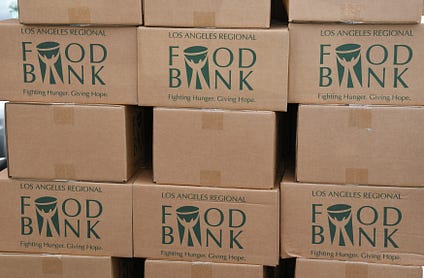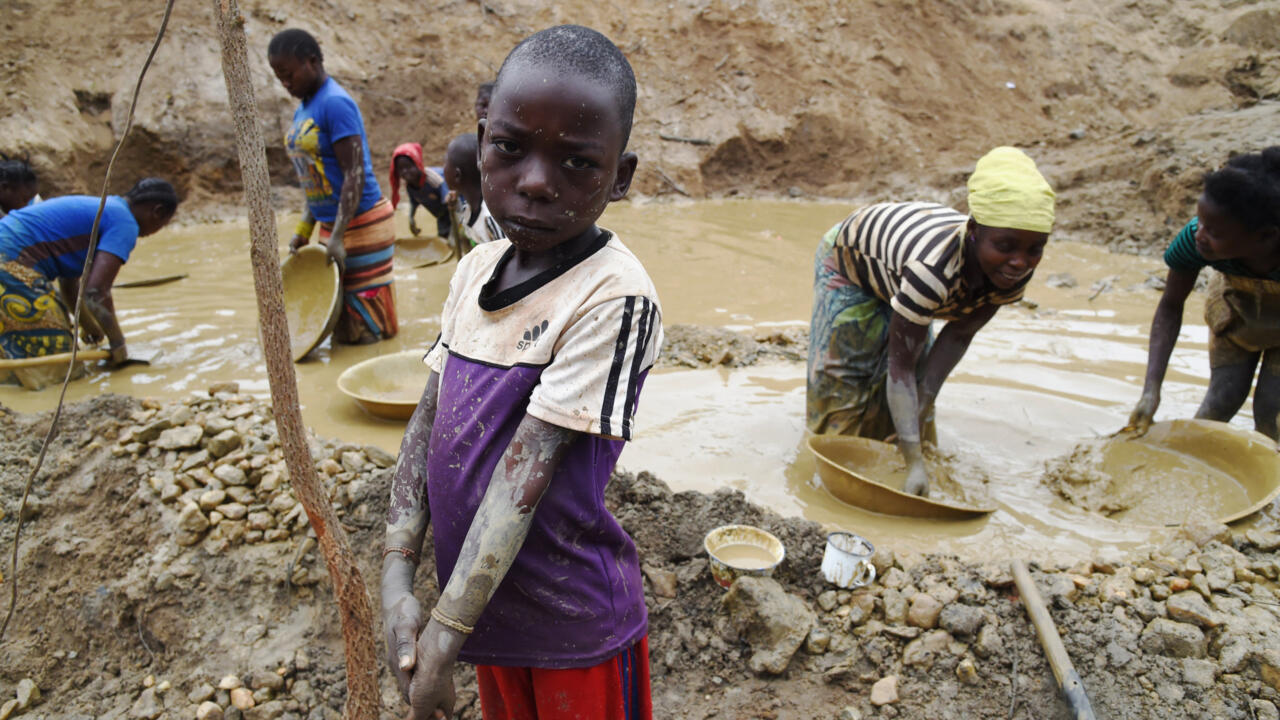Arizona taxpayers pay $30 million to settle child welfare lawsuits – ABC15 Arizona
Analysis of Arizona’s Child Welfare System in the Context of Sustainable Development Goals
Executive Summary
A review of Arizona’s Department of Child Safety (DCS) reveals significant financial and operational challenges that directly impact the state’s progress toward several United Nations Sustainable Development Goals (SDGs). Since 2016, the agency has disbursed over $30 million in lawsuit settlements related to children in its care. These incidents underscore critical deficiencies in institutional accountability, justice for children, and the protection of vulnerable populations, particularly concerning SDG 16 (Peace, Justice and Strong Institutions), SDG 3 (Good Health and Well-being), and SDG 10 (Reduced Inequalities).
Institutional Failures and Financial Ramifications
Settlement Payouts Highlighting Systemic Issues
State records indicate a consistent pattern of substantial financial payouts to settle legal claims against DCS, averaging four years per claim resolution. The most frequent allegation is the wrongful removal of a child from their home. These settlements represent a diversion of public funds from proactive child welfare services to reactive legal resolutions, signaling a failure to build effective and accountable institutions as outlined in SDG 16.
Case Studies in Violation of Child Protection Mandates
Several major settlements exemplify the severe consequences of systemic failures and their conflict with core SDG principles:
- Violation of SDG 3 & SDG 10: A $750,000 settlement was paid to the family of a 16-year-old with severe non-verbal autism who was allegedly wrongfully removed and subsequently abused in a group home. This case highlights a failure to ensure the well-being of children with disabilities and protect them from inequality.
- Violation of SDG 16.2: The largest single payout of $6.8 million in 2021 was for an undisclosed minor who suffered permanent, lifelong disabilities after allegedly being shaken while in state-associated care. This is a direct contravention of the goal to end abuse, exploitation, and all forms of violence against children.
- Violation of SDG 16.2: A $50,000 settlement was paid to the family of an 18-year-old who was shot and killed while residing in a DCS-licensed group home, representing a fundamental failure to provide a safe and secure environment.
Challenges to Achieving SDG 16: Peace, Justice and Strong Institutions
Institutional Accountability and Transparency
The DCS response frames litigation as a common occurrence in high-risk sectors and states that settlements are a strategy to avoid costly legal battles. This position, however, raises concerns regarding Target 16.6, which calls for the development of effective, accountable, and transparent institutions. The pattern of settling without admitting wrongdoing obscures systemic problems and hinders efforts to implement reforms that would prevent future harm.
Access to Justice and Protection from Violence (Targets 16.2 & 16.3)
The recent murders of three children known to DCS—Rebekah Baptiste, Emily Pike, and Zariah Dodd—represent the most severe failure to meet Target 16.2, which aims to end all forms of violence against children. While lawsuits filed by families represent an attempt to achieve Target 16.3 (ensure equal access to justice), the outcomes suggest that the system is failing in its primary protective duties, forcing families to seek redress for harm that should have been prevented.
Conclusion: The Imperative for SDG-Aligned Reform
The tens of millions of dollars in legal settlements paid by Arizona’s DCS are a symptom of deeper institutional failings that are fundamentally at odds with global sustainable development objectives. The recurring instances of wrongful removal, abuse, neglect, and death of children in state care demonstrate a critical gap in achieving foundational targets for child protection, health, and justice.
- Strengthening Institutions (SDG 16): Urgent reform is needed to enhance the effectiveness, accountability, and transparency of the child welfare system to prevent harm and ensure public funds are used for proactive support rather than reactive settlements.
- Ensuring Well-being (SDG 3): The system must prioritize the physical and mental health of all children, with specialized protections for those with disabilities, to uphold their right to well-being.
- Reducing Inequalities (SDG 10): Protections must be strengthened for the most vulnerable children to ensure the welfare system serves as a tool for equity, not a source of further trauma and disadvantage.
Analysis of Sustainable Development Goals in the Article
1. Which SDGs are addressed or connected to the issues highlighted in the article?
- SDG 16: Peace, Justice and Strong Institutions
- The article directly addresses the failures of a state institution, the Arizona Department of Child Safety (DCS). It highlights issues of accountability, transparency, and effectiveness, as evidenced by the tens of millions of dollars paid in lawsuit settlements. The core theme is the justice system’s response to the harm caused to children under the state’s care, which aligns with the goal of building effective and accountable institutions.
- SDG 3: Good Health and Well-being
- The well-being of children is central to the article. It details severe negative health outcomes for children in the welfare system, including “permanent injury and lifelong disabilities” for a minor who was allegedly shaken, the murders of three children (Rebekah Baptiste, Emily Pike, and Zariah Dodd), and the alleged abuse of a child with severe autism. These instances represent a profound failure to ensure the health and safety of vulnerable children.
- SDG 10: Reduced Inequalities
- The article implicitly touches upon this goal by focusing on the vulnerability of children, a group that often lacks power and agency. The case of Brooke Scianna, a child with “severe non-verbal autism,” specifically highlights the heightened vulnerability of children with disabilities within the system. The article suggests the system is failing to protect its most vulnerable members, thereby perpetuating inequality.
2. What specific targets under those SDGs can be identified based on the article’s content?
- Under SDG 16: Peace, Justice and Strong Institutions
- Target 16.2: End abuse, exploitation, trafficking and all forms of violence against and torture of children. The article provides multiple examples of violence and abuse against children under the care of DCS. This includes a minor allegedly “shaken, causing permanent injury,” the alleged abuse of Brooke Scianna in a group home, and the murders of three children known to the agency. These events are direct examples of the violence this target aims to eliminate.
- Target 16.6: Develop effective, accountable and transparent institutions at all levels. The entire article serves as a critique of the effectiveness and accountability of DCS. The payment of “more than $30 million to settle lawsuits” since 2016, the admission by a lawmaker that “something’s broken,” and the agency’s justification for settling cases to avoid costly litigation all point to systemic issues within the institution. The article questions whether the “billion-dollar annual budget of DCS” is being used effectively or to “cause harm.”
- Under SDG 10: Reduced Inequalities
- Target 10.2: By 2030, empower and promote the social, economic and political inclusion of all, irrespective of age, sex, disability, race, ethnicity, origin, religion or economic or other status. The case of Brooke Scianna, a “very vulnerable, autistic child,” is a direct link to this target. Her alleged wrongful removal and subsequent abuse in a group home demonstrate a failure to protect and ensure the well-being of a person with a disability, which is a key component of promoting inclusion and reducing inequality.
3. Are there any indicators mentioned or implied in the article that can be used to measure progress towards the identified targets?
- For Target 16.2 (End violence against children):
- Indicator (Implied): Number of reported cases of abuse, neglect, and death of children in the child welfare system. The article provides specific qualitative data points for this indicator, such as the murders of Rebekah Baptiste, Emily Pike, and Zariah Dodd, and the case of a minor who suffered “permanent injury and lifelong disabilities.” A reduction in such incidents would measure progress.
- For Target 16.6 (Effective and accountable institutions):
- Indicator (Explicit): Total monetary value of lawsuit settlements and judgments paid by the child welfare agency. The article explicitly states this figure: “Since 2016, state records show DCS has paid out more than $30 million to settle lawsuits involving children.” This financial metric serves as a direct indicator of institutional failure and the cost of its consequences.
- Indicator (Implied): Number and type of lawsuits filed against the agency. The article notes that the “most common allegation is wrongful removal of a child.” Tracking the frequency and nature of these lawsuits would be an indicator of the institution’s performance and areas needing reform.
- Indicator (Implied): Average time to settle claims. The article mentions, “On average, records show it takes four years for the state to settle claims.” This duration can be used as an indicator of the efficiency and responsiveness of the justice and administrative systems involved.
4. Summary Table of SDGs, Targets, and Indicators
| SDGs | Targets | Indicators (Mentioned or Implied in the Article) |
|---|---|---|
| SDG 16: Peace, Justice and Strong Institutions | 16.2: End abuse, exploitation, trafficking and all forms of violence against and torture of children.
16.6: Develop effective, accountable and transparent institutions at all levels. |
|
| SDG 3: Good Health and Well-being | 3.8: Achieve universal health coverage, including financial risk protection, access to quality essential health-care services… |
|
| SDG 10: Reduced Inequalities | 10.2: By 2030, empower and promote the social, economic and political inclusion of all, irrespective of age… disability… or other status. |
|
Source: abc15.com
What is Your Reaction?
 Like
0
Like
0
 Dislike
0
Dislike
0
 Love
0
Love
0
 Funny
0
Funny
0
 Angry
0
Angry
0
 Sad
0
Sad
0
 Wow
0
Wow
0















































/environment-climate-change-and-health-(ech)/water-sanitation-hygiene-and-health-(wsh)/landfill-tuvalu-36092.tmb-1200v.jpg?sfvrsn=5c21fe40_1#)


.jpg.webp?itok=0ZsAnae9#)

























